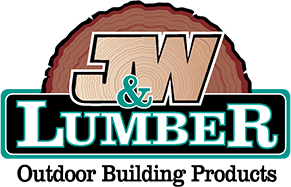One of the final steps of any wood project is staining and sealing the lumber. Staining adds a stylish, beautiful finish that can help protect the surface of the wood, while sealing protects lumber from the elements. If you’ve never stained or sealed wood before, then read on to learn what you should do for a top-quality job.
- Applying the Stain:
There are a number of things to keep in mind when staining lumber decking or fencing, but perhaps the two most important are to keep your surface and work area clear of dust and dirt and apply stain evenly to your lumber. Use a wider brush when staining, as this will help distribute the product evenly over a broader area. - Adding the Sealant:
First use sandpaper to make sure that your lumber decking or fencing is uniform—sand away any knots, splintering, stamps, or other marks. Apply a thin, even coat, keeping in mind that it is actually better to use less sealant. You can always add a second coat, and two thin coats will soak into the wood better than one thick coat. - Protecting the Finish:
Maintaining the stained and sealed finish of your lumber decking is a primary concern after you finish. Keep your lumber decking clean and free of debris that may dig in and damage the finish. Additionally, spray a little water on your sealed deck every few months to make sure that it is still repelling moisture effectively.
Staining and sealing your lumber decking, fencing, or patio cover doesn’t have to be difficult, even for first-timers. For more information, or to get help designing the lumber decking of your dreams, call J & W Lumber at (760) 741-8776. Since 1957, we have been helping the southern California community handle their lumber decking, fencing, and patio cover projects. Contact us with any questions you may have.


